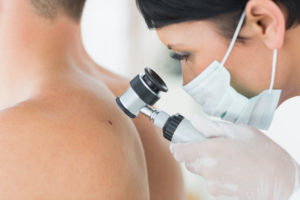Basal Cell Carcinoma – Avoidable and Treatable
- Posted on: Aug 15 2016
 A lifestyle disease is a disease that is associated with the choices you make and the way you live and spend your time. Skin cancer has been called a lifestyle disease. You may not agree with that moniker, but skin cancer can be deadly if not caught early and treated. If you choose to spend lots of time in the sun this summer, that is your choice, but staying knowledgable on the topic of skin cancer is a first step in understanding how to avoid it. Here are three things to know about Basal Cell Carcinomas (BCCs):
A lifestyle disease is a disease that is associated with the choices you make and the way you live and spend your time. Skin cancer has been called a lifestyle disease. You may not agree with that moniker, but skin cancer can be deadly if not caught early and treated. If you choose to spend lots of time in the sun this summer, that is your choice, but staying knowledgable on the topic of skin cancer is a first step in understanding how to avoid it. Here are three things to know about Basal Cell Carcinomas (BCCs):
- BCCs are abnormal, uncontrolled growths that usually develop on sun-exposed parts of your body, especially your head and neck. They can occur on any part of your body – even those that are rarely exposed to sunlight. Although a general warning sign of skin cancer is a sore that won’t heal or that repeatedly bleeds and scabs over, basal cell carcinomas may also appear as:
- A flat, scaly, brown or flesh-colored patch on your back or chest.
- A waxy or white bumpon your face, neck or ears. The bump may bleed and develop a crust. In darker skinned people, this type of cancer may be brown or black.
- Eighty to 85% of non-melanoma skin cancers are BCCs – are the most frequently occurring form of all cancers. More than one out of every three new cancers is a skin cancer – and the vast majority are BCCs.
- BCCs affect the lower, basal layer of the epidermis, but they rarely spread beyond the original site. They should never be taken lightly, however. They can be disfiguring and even deadly if not treated promptly.
A full-body check – from head to toe – once a year is the best way to screen for BCCs, as well as all other forms of skin cancer. Using sunscreen that is 30 SPF or greater is crucial, especially during the times of the day when the sun is at its hottest – about noon to 3 p.m.
Do you have a suspicious growth or mole? Don’t wait. Call to schedule an appointment, today: (301) 249-0970.
Posted in: Basal Cell Carcinoma


